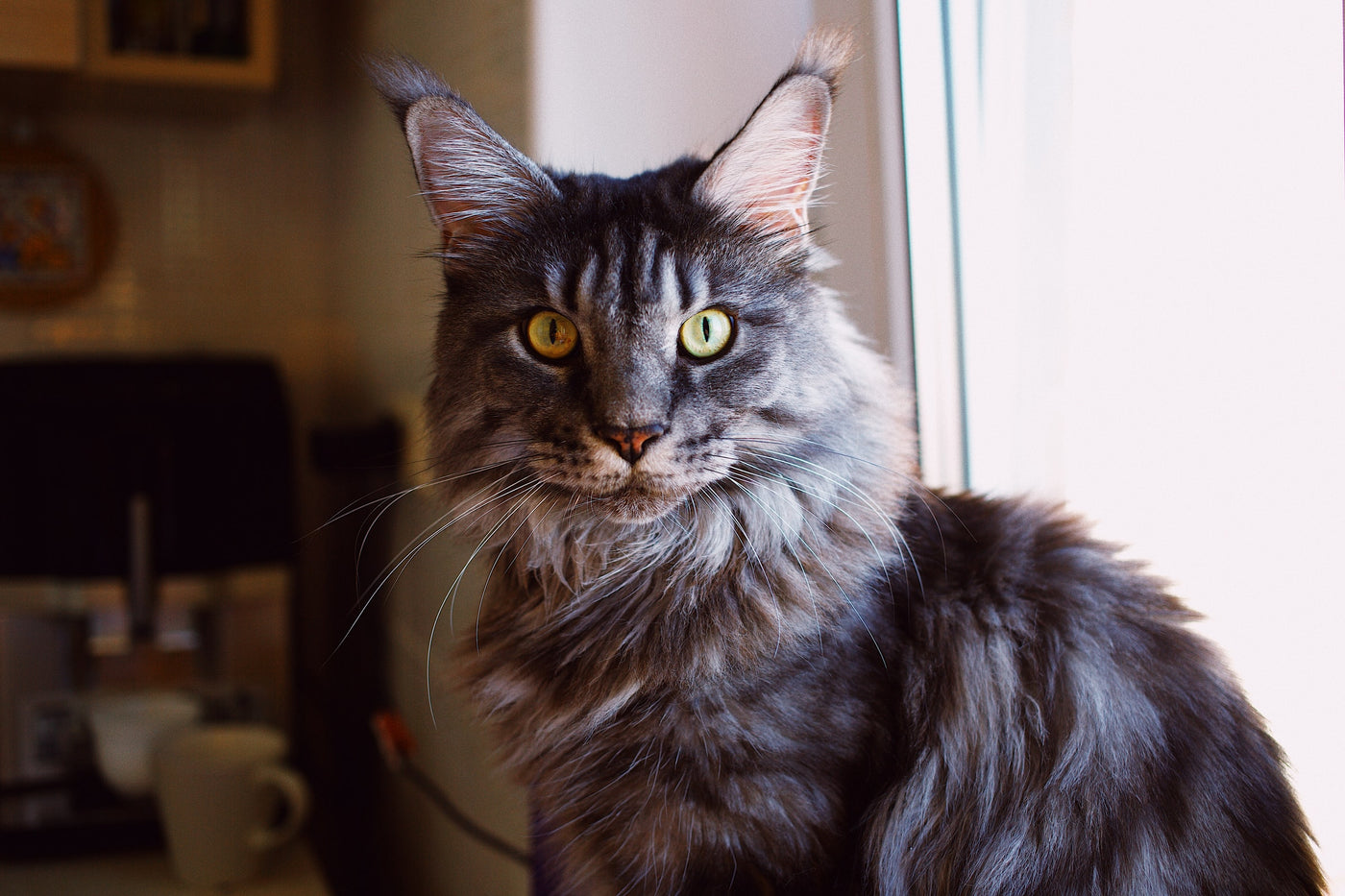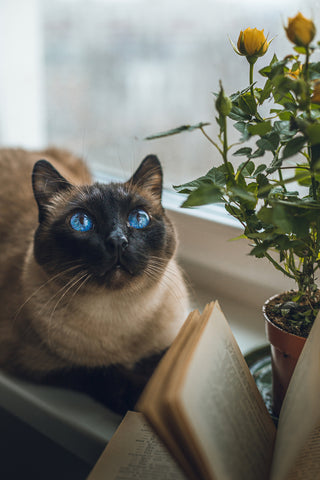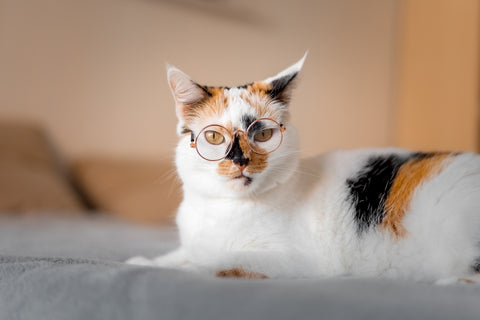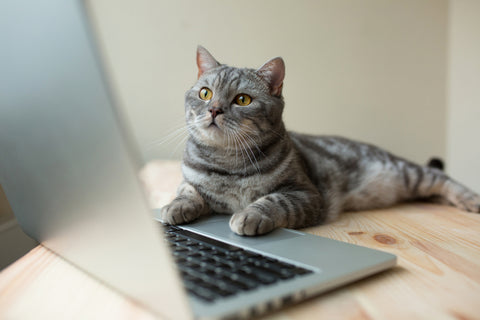
About Maine Coon Cats Growing Up
When you bring home your new Maine Coon cat, it will look like a miniature lynx rather than a house cat. Every new Maine Coon owner thinks that his or her Maine Coon kitten is huge compared to adult non-Maine Coon cats until they become adult Maine Coon cats.
Maine Coon grow up to be quite big and strong! If you raise your Maine Coon from an early age, you can minimize health issues that may occur due to the increased size and weight of your pet.

Photo by Gettyimages
Kitten's Size
The Maine Coon kitten size is a little bit bigger than most other kittens. At three months old, you will already have a small cat on your hands at roughly 3-5 pounds (1.36-2.27 kg)!
Be ready to play with a small cat when your Maine Coon is only a few months old. You should also start thinking about buying a heavy-duty scratching post.
On average, female Maine Coons are smaller than their male counterparts. However, if your pet is neutered or spayed before reaching sexual maturity (about one year), it may not reach full size because of a lack of growth hormones.
Average Cat's Size
Maine Coons are considered to be a very large breed of cats. Size is one of their most recognizable features.
The average male cat weighs between 15 and 25 pounds (6.8 and 11.34 kg) and female Maine Coons weigh about 10% less than males – around 10-15 pounds (4.54-6.8 kg).
It is not uncommon for a Maine Coon cat to weigh up to 30 pounds (13.6 kg), but such cats are considered to be overweight or obese, and it puts them at risk of developing many health issues later in life such as diabetes mellitus, heart disease, and arthritis.
Adult Cat's Size
The average female Maine Coon height is 8-14 inches (20.32-35.56 cm) at maturity. Males grow to between 10-16 inches (25.5-40.64 cm). Maine Coons are one of a few breeds of cats that weigh more than 10 pounds in adulthood – they do tend to grow quite large and fluffy.
Male vs Female Maine Coon Size
Maine Coons are large and muscular cats, with large round paws and tufted fur. Males can reach up to 25 pounds (11.34 kg). The longest Maine Coon on record was a male cat named Stewie, who measured 48.5 inches long.
|
Maine Coon Size |
Male |
Female |
|
Weight (pounds) |
15-25 |
10-15 |
|
Height (inches) |
10-16 |
8-14 |
|
Length (inches) |
19-40 |
19-40 |
Male Cats
Male Maine Coons have a broad, long body with relatively short legs, while females tend to be slimmer and longer-legged.
The most obvious difference between male and female Maine Coons is their head size. Males usually have broader heads that taper down to a narrower muzzle, while females usually have rounder heads with a less defined face.
Female Cats
Female Maine Coons have a head shape that resembles a longhaired Siamese, with an angular contour, fuller cheeks, and no pronounced cheekbones. Females usually have more prominent curves than males of similar size.
Comparing Male and Female Maine Coon Cats
Maine Coons are often known for their friendly, laid-back personality. They can make great family pets because they are known to enjoy human company and being around children, but they can also be stubborn sometimes. Maine Coons can learn simple tricks such as fetching a ball or ringing a bell to go outside, and they'll follow you around like your shadow if they think you have food.
Male Maine Coons tend to be more active than female Maine Coons and will spend a lot of time running around playing with their owners and other pets in your home. Young males tend to be leaner than young females, but by adulthood, there's only around a 5-10 lbs difference in weight between males and females of a similar age.
Maine Coon Size Compared to Other Cats and Animals
So, how big do Maine Coon cats get? Maine Coon’s average size makes them one of the largest domesticated cat breeds in the world. Most domestic adult cats weigh between 8 and 10 pounds (3.63 and 4.54 kg) while a Maine Coon kitten can weigh up to 5 pounds (2.27 kg) after just 3 months!
|
Breed |
Weight (pounds) |
Height (inches) |
Length (inches) |
|
Maine Coon |
10 - 25 |
10 - 16 |
19 - 32 |
|
Average Cat |
8 - 11 |
9 - 10 |
18 |
|
Turkish Angora |
7 - 10 |
8 - 10 |
14 - 16 |
|
Norwegian Forest Cat |
9 - 20 |
9 - 12 |
12 - 18 |
|
Pomeranian Cat |
4 - 8 |
7 - 12 |
14 - 17 |
Maine Coons and Turkish Angora Cats
Turkish Angoras are similar to Maine Coons in temperament and energy. Turkish Angora cats tend to have lighter-colored fur and are a bit smaller than the Maine Coon. But, both cats have longer fur and need regular maintenance. Think twice about picking up one of these cats if you don’t have the time to help maintain their coat!
Maine Coons and Semi-Wild Domestic Cats
Semi-wild domestic cats are also known as hybrid cats. These cats were originally developed as a mix of domestic cats and wild cats such as the Asian leopard cat, jungle cats, or an Ocicat. Many of these cats can get as large as a Maine Coon.
Maine Coons and Long-haired Cats
On average, domestic long-haired cats weigh 8-15 pounds (3.63-6.8 kg), which is smaller than most Maine Coon cats. Maine Coons and other long-haired cats require extra grooming attention. There are many different types of long-haired cats with a variety of temperaments.
Maine Coons and Raccoons
There is a myth that Maine Coon cats are the result of breeding domestic cats with raccoons! Raccoons are medium-sized animals, weighing between 7.7-20 pounds (3.49-9.07 kg). This myth has been dispelled with DNA testing, but it’s fun to think about when you compare the look and weight of a Maine Coon cat with a raccoon!
Why Are They So Big?

Photo by Thierry LEMARECHAL
The reason that Maine Coons are so big has to do;kafj with a combination of factors: their genetics, their nutrition, and their environment. Maine Coons grow quickly as kittens, but then their growth rate slows so that their muscles and skeleton system can continue to develop.
This is mainly due to breeding. This long-haired breed was bred to be a barn cat that could handle harsh, North Eastern winters. Their long hair requires extra grooming but can also help them stay warmer in the cooler climate.
There are several theories as to why they tend to be so big, including their history as raccoon hunting cats, selective breeding for larger sizes, and their adaptation to colder temperatures through their thick fur coat.
Maine Coon Growth Spurts
Maine Coons are large, long, and lean. And like most cats, they're slow to mature. But once they hit their prime, they’ll reach their Maine Coon adult size at around 4 years old.
Their first growth spurt will happen between 3 and 7 months. The kitten will continue to fill out until at least their first year, though some will continue fill out until about 4 years of age. Those that have been neutered or spayed may weigh slightly less than average due to loss of body fat rather than muscle mass.
How to Predict The Maine Coon’s Size?
It’s impossible to know just how big your Maine Coon kitten will get. But you can compare your kitten’s weight to the recorded weight of other cats to get a rough idea. Holding off on spaying or neutering until your cat’s growth plates have fully grown can increase their final size.
If you got your kitten from a breeder, you can ask them how big the kitten’s parents are. The size of the parents can give you a rough idea of how big your kitten may grow to be.
Get To Know Your Maine Coon Better
The Maine Coon is a friendly, family-oriented cat, and they are quite smart, too. Maine Coons tend to be a relaxed breed, though each individual cat will have its own quirks.
Some common traits of Maine Coon cats include big size (depending on gender) and long fur that can be silver or brown (males are bigger with dark stripes). They also tend to be friendly and intelligent. Be aware that Maine Coons grow into adults at different rates depending on their gender. Males will reach adulthood faster and be bigger than females at full maturity.
If you’re interested in learning more about your Maine Coon, you can get a DNA test done for your cat. By simply swabbing your cat’s mouth, you'll receive a percentage breakdown of the genetic similarity that your cat shares with 21 top cat breeds!
Conclusion
The Maine Coon is a large cat breed with a generally relaxed personality that can make a great addition to your family. These cats enjoy being around people and will make lovable pets! They can also be quite playful when enticed!
It is one of only a few breeds known as coon cats and can be found in many colors and patterns including tabby, solid, spotted, tortoiseshell, and smoke.
These cats aren’t aloof or standoffish — they love to be around people and are known for how affectionate they are. In fact, Maine Coons tend to follow their owners from room to room at home. Their size helps with that, allowing them to keep up with you. But even if they weren’t so big, they would still love spending time with people as much as possible!
Frequently Asked Questions
How Big is an Adult Maine Coon?
There are differences in Maine Coon size depending on sex and age. Adult male cats will be bigger than females, and kittens will have different sizes from adult cats. In general, a Maine Coon cat’s size is directly proportional to its weight; so male cats can grow up to 25 pounds (11.34 kg) while female cats are a bit lighter, weighing up to 12 pounds (5.44 kg).
What is the Biggest Maine Coon Cat?
There are several Maine Coon cats on record as being the largest. There are two cats that hold the record for longest and heaviest, and each could be considered the “biggest” depending on how you look at it!
Stewie is the longest Maine Coon cat on record at 48.5 inches (123.19 cm). The heaviest Maine Coon cat on record is Ludo, weighing 34 pounds (15.42 kg). There are other cats out there that may have the claim to the throne of the biggest Maine Coon cat, but they haven’t been confirmed by the Guinness Book of World Records, yet.
Could Maine Coon Cats Be Small?
Yes, they can be small compared to large Maine Coons and there are a few reasons why your cat might not be growing to its full size. For example, genetics play a huge role in whether your cat will reach the higher end of the Maine Coon averages. Another reason could be their diet. Work with your vet to ensure you’re feeding your cat the right amount and high-quality food. Being spayed or neutered before their growth plates have finished developing is another reason your cat may be on the smaller side.



